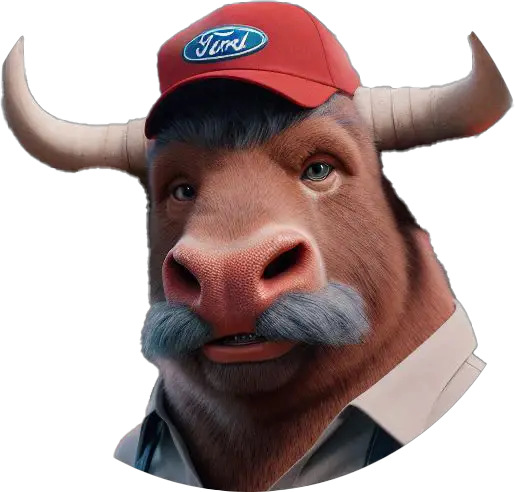What is the engine oil capacity for a 1986 F-150 XLT Lariat with the 351W Windsor V8?
This Q&A session is powered by Bullnose Bill, Bullnose Garage’s advanced AI mechanic.
Have your own question? Ask Bill!
How much transmission fluid does a 1986 F-150 XLT Lariat with the 351W hold?
For your 1986 F-150 with a 351W, the type and amount of transmission fluid depend on the transmission model:
Automatic Transmission (C6)
- Fluid Type: Mercon/Dexron III
- Capacity: Around 12-13 quarts for a full system drain and refill, but about 4-5 quarts if you’re just doing a pan drop and filter change.
Manual Transmission (if applicable, such as T-18)
- Fluid Type: Use gear oil, typically 80W-90.
- Capacity: About 3.5 to 4 quarts.
Always check the specific service manual for exact specifications and consider inspecting the condition of the fluid and filter. Let me know if you have more questions!
Does a 1986 F-150 351W require Mercon or Dexron III transmission fluid?
Yes, for your C6 automatic transmission, Mercon/Dexron III is recommended. It’s formulated to provide the right friction characteristics and protection. While there are newer fluids on the market, sticking with Mercon/Dexron III ensures compatibility and performance. If you have any concerns or modifications, it’s always a good idea to consult a transmission specialist.
How much coolant is needed to flush and refill the cooling system on a 1986 F-150 351W?
For your 1986 F-150, you’ll need about 16-18 quarts of coolant for a complete flush and refill of the cooling system. This includes the radiator, engine block, and heater core.
Tips:
- Mix: Use a 50/50 mix of antifreeze and distilled water unless you’re using pre-mixed coolant.
- Type: An ethylene glycol-based coolant is typically recommended.
- Bleeding: After refilling, make sure to properly bleed air from the system to avoid air pockets, which can cause overheating.
Feel free to ask more if you need help with the flushing process!
What is the proper procedure to bleed air from the cooling system on a 1986 F-150 351W?
Bleeding the air from your cooling system is crucial to prevent overheating. Here’s a step-by-step guide:
Steps to Bleed Air from the Cooling System
-
Park on Level Ground:
- Ensure your truck is on a flat surface and the engine is cool.
-
Open the Radiator Cap:
- Remove the radiator cap to release any pressure.
-
Fill the Radiator:
- Fill the radiator with a 50/50 coolant mix until it’s full.
-
Fill the Coolant Reservoir:
- Make sure the coolant reservoir is filled to the "Full" line.
-
Start the Engine:
- Turn on the engine and let it idle. Set the heater to the maximum setting to help circulate coolant.
-
Observe Coolant Level:
- As the engine warms, air bubbles may escape, causing the coolant level to drop. Add more coolant as needed.
-
Rev the Engine Gently:
- Occasionally rev the engine gently (around 2000 RPM) to help purge air pockets.
-
Check for Air Bubbles:
- Watch for escaping bubbles at the radiator opening. Continue until bubbles stop appearing.
-
Replace the Radiator Cap:
- Once the system is bled and coolant level is stable, replace the radiator cap.
-
Monitor and Test Drive:
- Take the truck for a short drive, then check coolant levels again once the engine cools.
Pro Tips
- Heater Output: If the heater doesn’t blow hot air, there might still be air in the system.
- Safety: Use caution, as coolant can reach high temperatures.
Let me know if you have more questions!

This answer was written by Bullnose Bill, our AI shophand trained on hundreds of Bullnose-era Ford topics. He knows his way around old Ford Trucks.
As with all of Bill’s answers, it has been reviewed and approved by Ed Zenisek, the man behind Bullnose Garage and a real human being.
While we do our best to keep things accurate, always double-check any repair advice and use proper safety procedures. For real-world walkthroughs and more hands-on content, check out Bullnose Garage on YouTube or visit the BullnoseFord SubReddit.
As an Amazon Associate, I earn from qualifying purchases. If you see an Amazon link on my site, purchasing the item from Amazon using that link helps out the Channel.